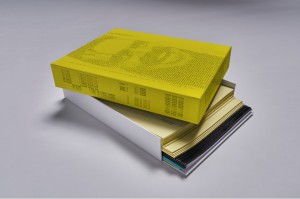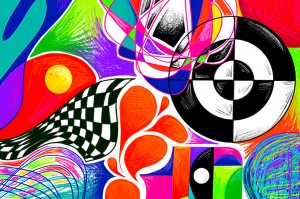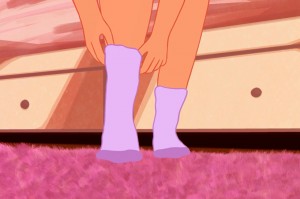“I create to make people smile. And to piss people off sometimes.” Desiginival Mini
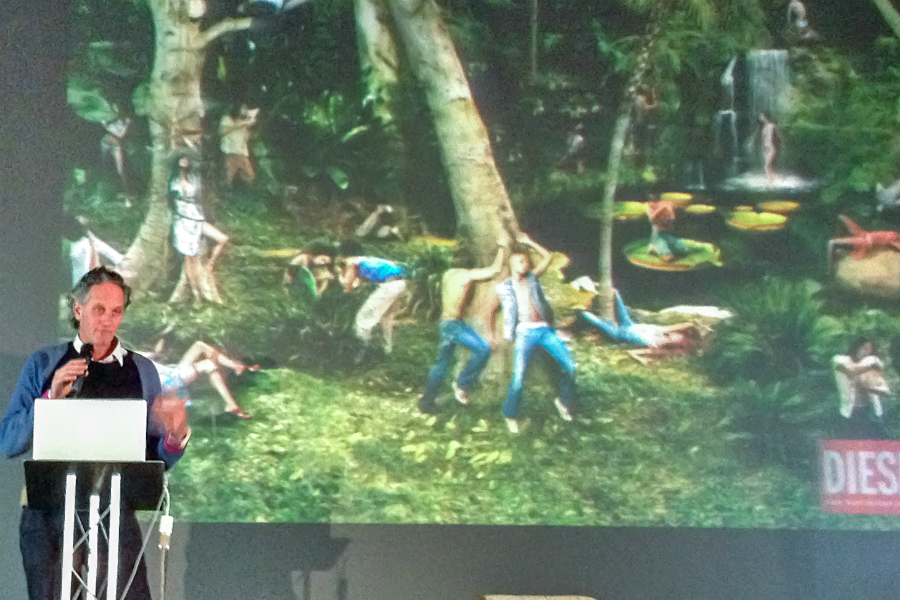
Honest business advice and creative encouragement, finished off with a great dose of humour; Maja Lorkowska does Designival…
This year’s design symposium, Designival, satisfied designers, artists, illustrators and non-creatives alike, despite its ‘Mini’ size. Organised as a series of three talks (plus open studios and a networking evening) at Camp and Furnace, this was a taster for next year’s Designival ‘proper’; three international speakers invited to share their own insight and experience in the creative industry.
First in line was connected-device-devotee Matt Webb, the co-founder and principal of BERG, who emphasised the importance of community and support networks when building a creative company. “The emotional pushback when trying to create a company is difficult, so one of the things I believe in is… creating culture for the world we’re in. The value of the community is incredible.” It seems that meeting up is key; according to Webb, the main thing is getting people together, talking and sharing ideas, and as a result all the other support networks will join in too.
Comparing the potential of the internet to a kind of “21st century electrification”, Ward is convinced that connected devices are the future of the online network. With grand plans for everyday objects coming to life and communicating with us, BERG is dedicated to the invention of gadgets with character which would operate in the circles of family and friends — an aspect of today’s technology which Webb feels is very much overlooked.
He recalled the first time he learned about the four ways of marketing a product: using despair, fear, greed or hope. “We made it a challenge to only ever talk about our work in a hopeful kind of way that we would try never to express anything using fear or despair, only ever hope.” BERG are faithful to promoting a positive attitude which is precisely what resonates with their clients, leading to the creation of Little Printer, a kind of modern fax machine, BERG’s signature product.
Coming back to business, Webb openly admits to being wildly overconfident at the start. “We thought, obviously, we’re the best tech and design duo in the world. Three months passed and we still had no work.” Still, he recalls this as a time when he learn to express what kind of value and market the company aimed for. Considering the amount of students sat in the audience, this was the sort of reassuring early experience that all aspiring artists can relate to.
Illustrator Paul Davis was next on stage, revealing a charming personality thinly veiled by an aura of cynicism. “This is why I’m here really, to try and describe the chaos of how you get work, who you meet, and how it can be fruitful or how it can be awful.” True enough, Davis’ advice is very much embedded in real-life scenarios described in hilarious yet practical detail. On keep yourself motivated as a freelancer, he states: “Keep a notebook, camera, and keep thinking, otherwise you just die. Don’t give up; I know people have, and I don’t see them any more. Write articles for magazines, come up with ideas all the time, because we’re not long here, are we? It really is that existentialist angst of knowing that we haven’t got long left.”
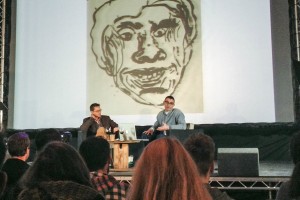
Tongue in cheek this may be, but the artist’s expertise is apparent. Talking about experimentation, he touched upon the potential consequences of carelessness when publishing work. “You’ve got to be careful these days, ‘cause your work’s everywhere.”
Davis has worked in advertising for many years now: “I’m obsessed with advertising and I despise it. It’s a bipolar thing.” He talked about his projects: from self-promotion through making a spoof menswear advertisement in order to promote his website, to making drawings for Diesel, for free. Davis isn’t alone in his love-hate relationship with advertising: each one of the speakers has been involved in it to some extent, and although fascinated, they all see it as a platform for displaying ideas rather than getting caught up in the glittering appeal of commerce.
When asked why he draws, Davis insisted that he would probably die without making art. “I just have to draw. It’s a form of therapy. Also, I create to make people smile. And to piss people off sometimes.” Of course, we could not expect anything less.
Speaking last, but certainly not least, was the Creative Director of communications agency KesselsKramer, Erik Kessels. Citing imperfections as one of the main sources of inspiration in the spotless virtual world, Kessels is the master of unexpected advertisement ideas while remaining reassuringly down to earth. Accordingly, his presentation consisted of image compilations of funny real-life mistakes, such as trees planted in parking spots, tastefully weaved in with the (not so) serious commercial work.
“It’s very important that you use your own hobbies and interests in the work. I mean, not all of them.” Thoroughly entertaining, Kessels talked about the importance of strong ideas as the central, selling point, from which the work can then be approached in any media. Rather than “hiding” behind all kinds of professional software, a strong idea allows for freedom of choice in its execution. This is the work ethic to which the company remains faithful.
Illustrating the importance of solid ideas, Kessels brought up two commercial projects, completely contrasting in terms of budget, but equally effective in the resulting product, suggesting that with strong conceptual basis, production is of secondary importance.
In an attempt to escape from the sterility of perfection, the designer deliberately celebrates mistakes and failure in the creative process. “You should also be frightened by the work you make yourself sometimes, it’s a good feeling. If you are too comfortable with your own work, it’s not good.” The company’s promotional material for Amsterdam’s Hans Brinker Budget Hotel proves just how far you can go in the direction of ‘frightening’ but fearless creativity. Playing on the hotel’s reviews as the worst in the city, the advertising campaign consisted of warmly welcoming slogans like: ‘Now a door in every room!’ Who wouldn’t be tempted?
It is safe to say that all design enthusiasts surely got what they came for at this year’s Designival Mini. It was a privilege to have such great creative minds share their expertise and talk about their beginnings so honestly. We left enlightened about the importance of humour, human interaction, keeping a notebook, and the ability to look outside of your own discipline. So much more than the mini name suggests!
Maja Lorkowska
Designival returns summer 2014 during the Liverpool Biennial and International Festival of Business



